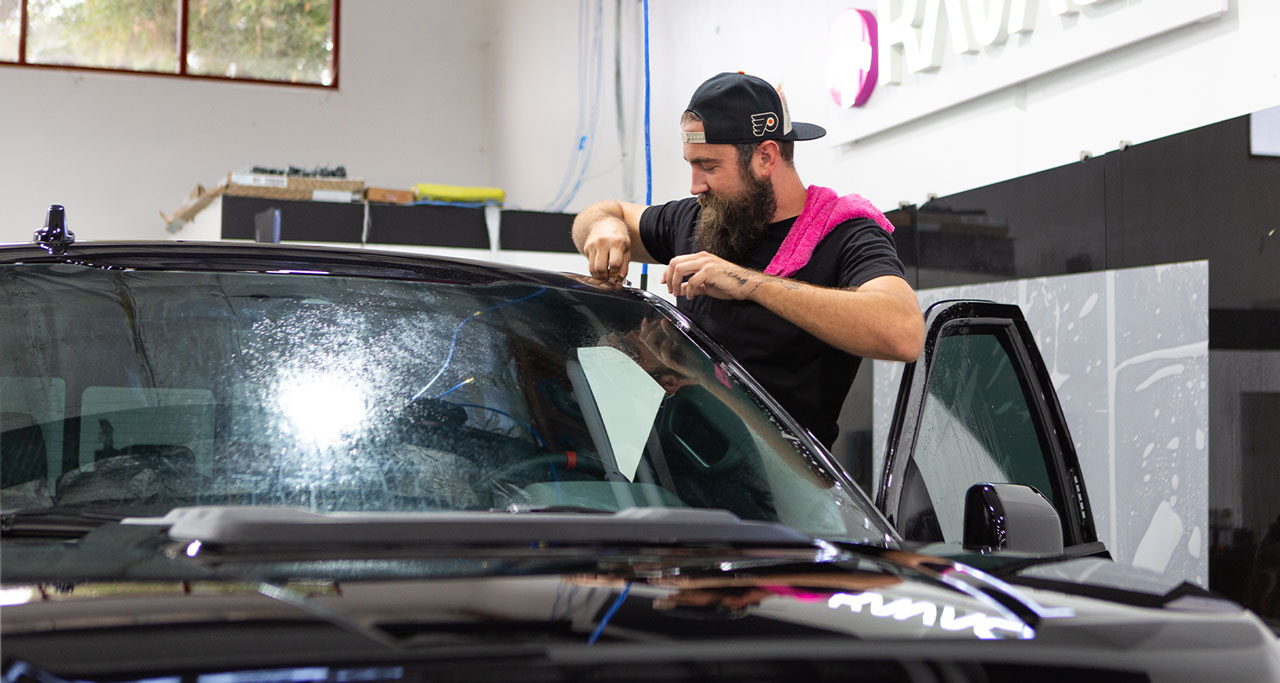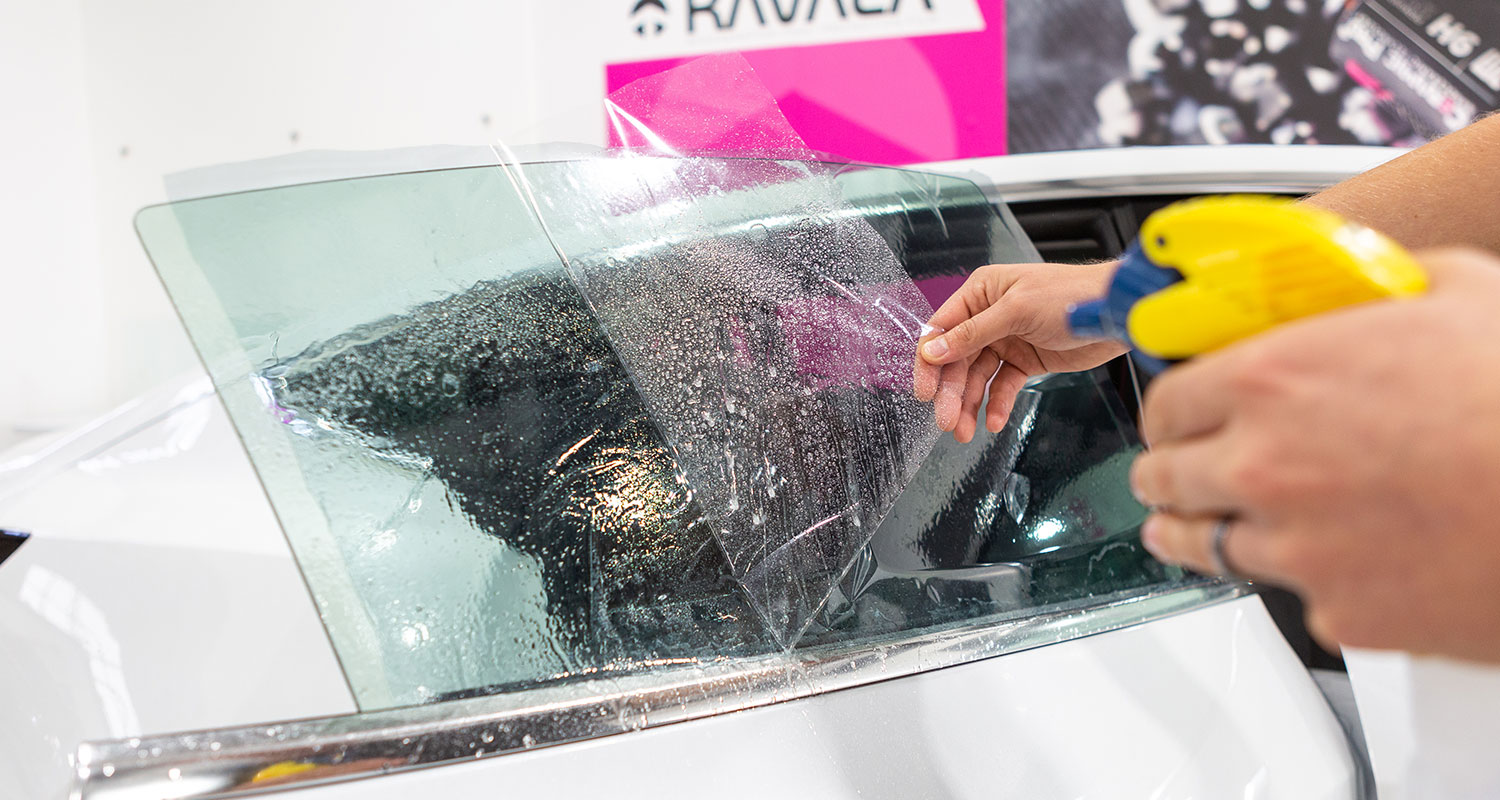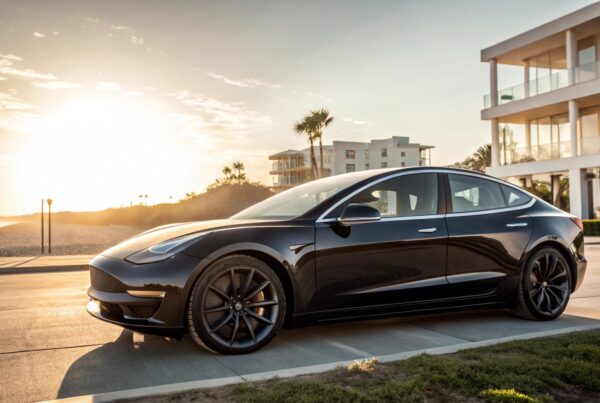Car owners today have several ways to customize the look and feel of their ride. Some prefer to add custom wheels, a body kit, or even apply a special vehicle wrap. However, the most popular type of automotive upgrade across the globe is installing a good window tint. .
More cars are arriving to dealership locations with a factory-installed window tint, mainly on the rear windows of four-door passenger cars, SUVs, and pickup trucks. But did you know that these darkened windows serve no purpose besides improving the aesthetic look? Just because a car window is dark does not mean that it provides the necessary protection from infrared rays and UV radiation. What you’re seeing is called privacy glass, and besides the fact that it’ll make the windows appear darker, and may reduce glare slightly, it does not provide any protective benefits whatsoever.
The truth is, more car owners today are becoming conscious of this reality, which convinces them to invest in a high-quality window film that can block cancer causing UV rays, without reducing cell phone reception, and sometimes even help reduce the car’s interior temperature inside your vehicle.
So, if you’re trying to determine what criteria are involved in creating a good window tint, this article is custom-made for you. In the information below, we’ll give you 5 easy tips that will help you find the best car window tint available – at the right price.
Tip #1- Start by Determining What’s Important to You
One of the most important factors of what automotive window film to use is your location and what’s important to you. Ask yourself, why do you need a tinted window? Do you live in the dry heat of Las Vegas or Arizona, the humidity of Florida, or the odd up and down weather of Colorado? The reason this is important is due to the protective benefits of window tint film.

If you live in the southwest where the temperatures can reach nearly 115 degrees, you will want a window tint that will block out UV light from going into your vehicle and lower the heat in your car. The heat blocking technology you’re looking for is found in a Ceramic Infrared or IR window tint. Tint film such as ceramic film includes benefits such as additional heat resistance and IR protection comparative to dyed film. Ceramic window tint uses nanoparticles to reflect more of the sun’s rays keeping your ride nice and cool during those hot sunny days.
If you live in a higher altitude area, blocking uv light should be your focal point. Some of the newest Carbon Color Stable films can block 99% of harmful UV rays – which not only damages your dashboard, seats, and interior trim but can also cause skin cancer. Also remember, darker tint does not necessarily mean more protection from infrared rays. The percentage of your window tint is only a measurement of how much light is projected through the film. The shade of the film may act as a glare reduction but depending on what type of car window tint you go with can be a factor in what harmful UV rays it can block out.
If you live in a humid area, you’ll want a window tint that has a protective layer on the inside – to reduce fogging up. Ceramic window film is less likely to fog vs their non-ceramic counterparts.
Tip #2 – Does Your Car Currently Have Privacy Glass?
Some of the newer cars, trucks and SUV’s have “tinted” rear and sometimes front windows. Now that can be a misconception, because that darker glass has a darker pigment in the glass and not actual window tint. We talked about this in the introduction above.

There is a large range of tint options you can go with when installing ceramic tint or any other dyed tint. The window tint percentage can vary between 5% to 50% depending on your taste and needs. The tint shop you decide to go with should also be able to provide you with all the specifics on which car window tint they carry.
We’ll explain in the next tip which “terms” are important to know when you’re shopping for window film for your ride.
Tip #3 – Do Some Research on Window Tint Terminology
People who are automotive specialists take pride in learning “inside baseball” terminology. Now if you’re confused by the phrase, something that is “inside baseball” refers to specific information that is relevant to those who work or are passionate about that specific industry.
In the window tinting world, some of these abbreviations simply don’t make sense to the average consumer. But, when you know what they mean, and why it’s important to understand them, you’ll be ahead of the game.
VLT- Visible Light Transmittance is light that can pass through your windows with tint film installed.
Basic English Translation: It’s how dark your window tint is. The lower the VLT number – the darker the tint film.
VLR- Visible Light Reflectance is when the light reflects off your windows, basically it will reduce glare on your windows.
Basic English Translation: VLR that is higher will be clearer than a lower rated tint.
TSER- Total Solar Energy Rejected is the ability to protect you and your vehicle from UVB, UVA, IR and VLS.
Basic English Translation: So, the higher the TSER is the better you will be protected from harmful radiation produced by the sun.
IR- Infrared Radiation is the suns products like UV rays and IR rays. UV rays will break down materials, like your dashboard, seats etc.
Basic English Translation: When your window tint blocks more IR – the cooler your vehicle will stay when the sun is shining.
These are the abbreviations you will see most often when shopping for your tint options.
Tip #4- Narrow Down Your Options
Now that you are all caught up on window tint education, now comes the fun part – narrowing down your options. While there are more than handful of different window tint types – there are only two that are worth your while.
 Carbon Color Stable Window Tint
Carbon Color Stable Window Tint
Carbon Color Stable window tint is what we’d like to call your entry-point to premium window tints. These window tints have Nano Carbon infused in the film that will add to the strength of the window and will block up to 99 percent of UV rays. This will in the end, protect you and your vehicle from damage from the sun.
Plus, they are manufactured with higher quality materials and assembly standards than most outdated dyed window tints. When you compare the pricing on a traditional dyed vs carbon color stable, it’s literally a few dollars more – with a higher return on investment.
Ceramic IR Window Tint
If you’re looking for the ultimate in protection, aesthetics, and longevity – the Ceramic IR film reigns supreme. It is the best of all the car window tints currently manufactured today, it will block almost all the UVB and UVA rays, and protect you from Infrared Transmissions. It also has multiple layers which makes your window stronger and will reflect the sun away from your windows.
Unlike metalized film or hybrid window films that can produce similar protective benefits, the Ceramic IR does NOT interfere with Bluetooth, Wi-Fi, and Radio in your vehicles. In fact, it’s a product that will last longer, and is backed by a lifetime warranty.
Tip #5 – Make the Switch to KAVACA Window Films
2020 was a ridiculous year – especially with regards to the uncertainty we all dealt with daily. 2021 should be a turning point for everyone. So, why not start by investing in a high-quality window film that not only protects but improves your comfort level.

If you’d like to learn more about KAVACA Window Films – or to receive a free quote for window tint installation near you, click the button below.


 Carbon Color Stable Window Tint
Carbon Color Stable Window Tint


